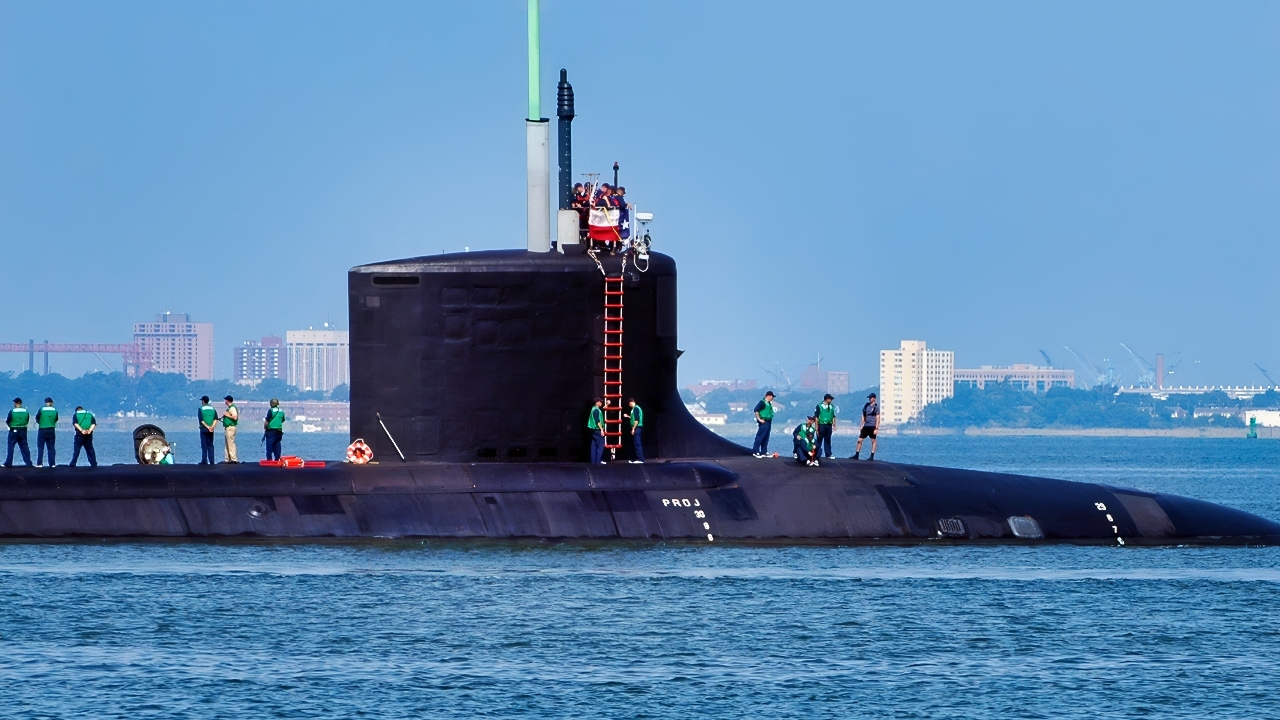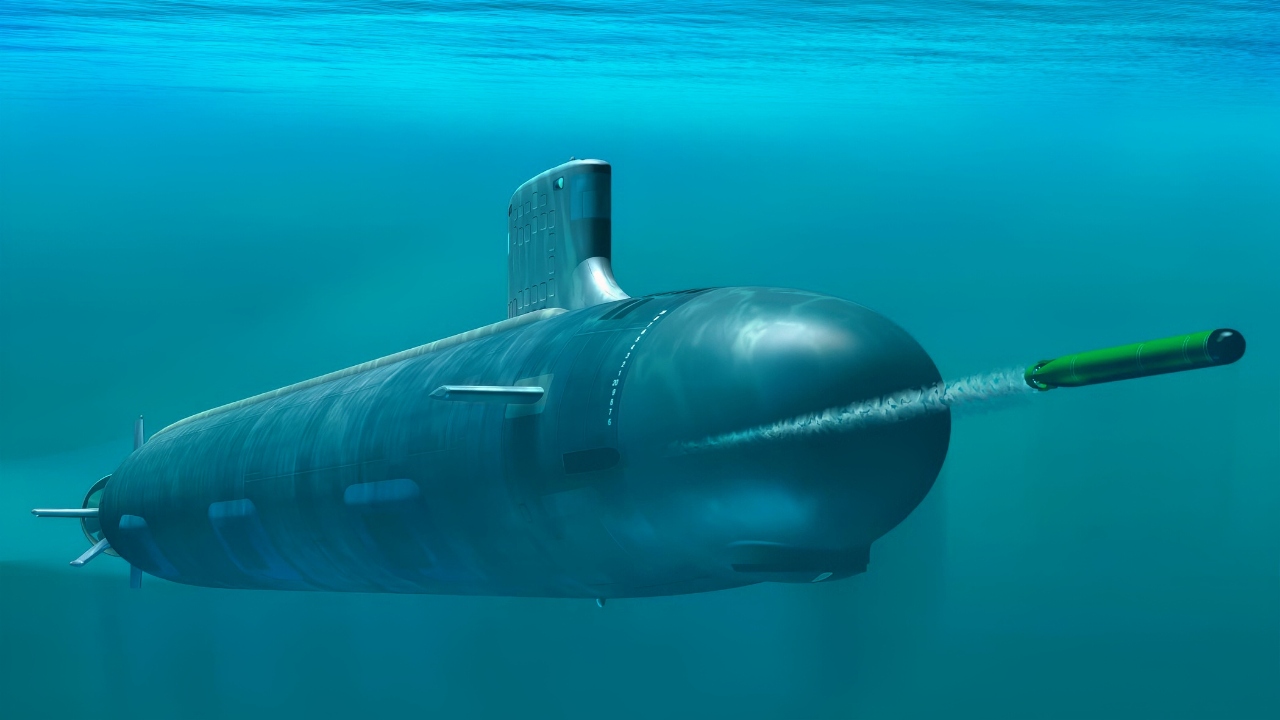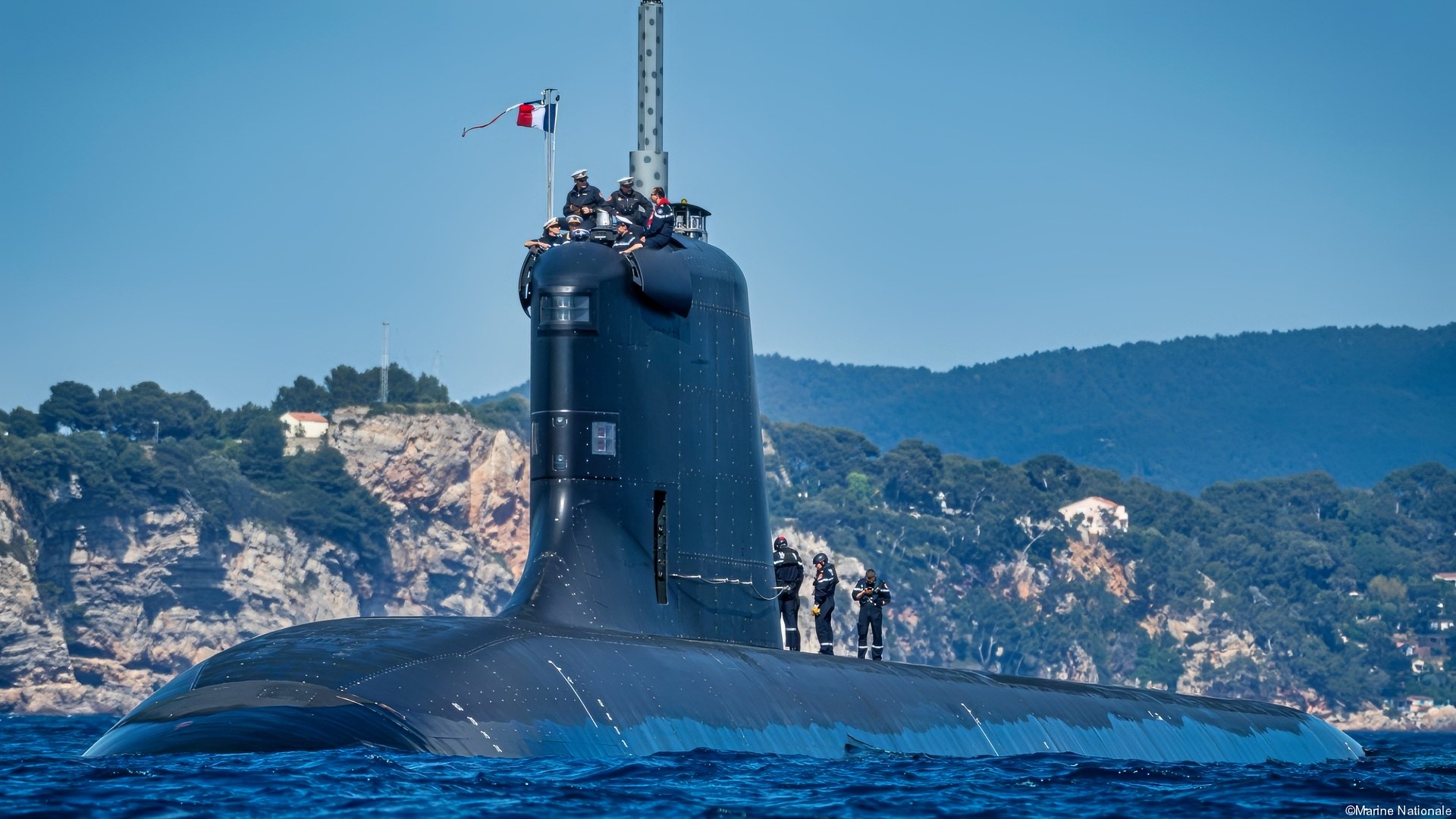Key Points and Summary – France’s new Suffren-class nuclear attack submarine represents a significant leap forward for its navy.
-The modern, stealthy boats replace the older Rubis-class and are the first in the French fleet to be armed with land-attack cruise missiles.

Image Credit: Creative Commons.
-While critics note the Suffren carries a smaller weapons load than its American or British counterparts, its multi-role design also accommodates special forces teams.
-The submarines are designed for key strategic roles, including escorting France’s aircraft carrier and its ballistic missile submarine fleet.
-A conventional version of the submarine was famously rejected by Australia in favor of the AUKUS pact.
Suffren-Class from France: A Nuclear Submarine Powerhouse?
France’s Suffren-class, known in the anglosphere as the Barracuda-class, is the French Navy’s latest generation of nuclear-powered attack submarines (SSNs).
Designed and built by France’s Naval Group, shipbuilder, the submarines replace the older Rubis-class.
The submarines, modern vessels with state-of-the-art sensors, sonar-defeating stealth coatings, and a multi-role flexibility, represent a significant step forward for the French Navy.
The submarine’s origins trace back to a broad overhaul of the French Navy in the late 1990s and early 2000s.
France’s military procurement agency launched the initiative for a new class of submarines in the mid-2000s, and Naval Group began construction in 2007.
The lead submarine of the class, the Suffren, launched in 2019, with commissioning in 2022 after qualification trials.
The Suffren-class fleet is slated to comprise six submarines in total. Two are already commissioned, two are under construction or fitting out, and two are planned, with full delivery of the Suffren fleet scheduled for the early 2030s.
A Strategic Role
Critics of the class point to the submarine’s weapon load-out and its smaller size compared to other submarines in service with allies.
“One disadvantage of this smaller size is that Suffren can carry fewer weapons,” leading naval expert H I Sutton wrote.
“With nuclear-powered attack submarines being an apex predator there is a consideration that they may sink so many enemy warships that they run out of torpedoes. This will be particularly true of the Suffren, which carries about the same number of weapons as a non-nuclear submarine. Her maximum load of around 24 weapons is about 60% that of the current Virginia and Astute classes.”
But some of that sacrifice in weaponry can be explained by another design consideration: the submarine’s onboard berthing for 15 special forces and their equipment, supported by a removable dry dock shelter to facilitate egress and ingress.
Further, the weaponry the Suffren-class does have onboard is among the most advanced currently at sea, Sutton explains. “The brand new F-21 Artemis heavyweight torpedo is derived from the Italian Black Shark type. This has an all-electric propulsion using the latest battery technologies.
“The boat will also be able to carry the SM-39 Exocet anti-ship missile and the new MdCN (Missile De Croisière Naval) cruise missile. This latter weapon provides the submarine with a strategic ‘first night’ strike capability, hitting land targets hundreds of miles away. It will be the first time that a French Navy submarine is equipped with land attack cruise missiles.”
A richly detailed infographic and breakdown of the Suffren-class created by H I Sutton for Naval News is available here.
Compared to larger counterparts in the U.S. Navy or Royal Navy, the Suffren-class has a smaller crew—down to 65 from the Rubis-class 70 sailors—significantly less than the nearly 100 crew onboard the Royal Navy’s Astute-class submarines, or the Virginia-class’ 135 sailors.
However, the submarines are true blue-water vessels, and they can fulfill several roles within the French Navy.
Arguably, two of their more important roles would be to escort the French Navy’s aircraft carrier, the Charles de Gaulle, which completed its first deployment to the Indo-Pacific earlier this year. In that role, Suffren-class submarines would screen the group by conducting anti-submarine duties.
Similarly, the class could serve to escort the French Navy’s Triomphant-class ballistic missile submarines.
The Australian Connection
The Suffren-class made waves when Australia’s rejection of the modified, conventionally powered submarines became public.
Canberra had been in advanced talks with Naval Group to replace Australia’s aged Collins-class submarines but backtracked from the plan, opting instead to sign a landmark agreement with the United States and United Kingdom.
That agreement, known by its acronym AUKUS, provided the legal and practical framework for sharing underwater nuclear propulsion technology with Australia.
As a part of the deal, the United States agreed to build modern nuclear-powered (though conventionally armed) submarines for the Royal Australian Navy.

Norfolk, Va. (Aug. 22, 2006) – Sailors stationed aboard the Pre Commissioning Unit (PCU) Texas (SSN 775) stand topside as she gets underway from Naval Station Norfolk.

SSN 774 Virginia Class Submarine Artist Rendering from U.S. Navy.
The French were furious. French President Emmanuel Macron went so far as to characterize Canberra’s about-face as a “stab in the back.”
The consternation was understandable. But from a capabilities standpoint, the AUKUS agreement trumped the nearly closed French deal.
Boasting unlimited range, extensive training from the U.S. and British navies, and support for the maintenance and sustainment infrastructure necessary to keep the nuclear submarines afloat, the AUKUS deal offered to the Australians was simply too good to pass up.
About the Author: Caleb Larson
Caleb Larson is an American multiformat journalist based in Berlin, Germany. His work covers the intersection of conflict and society, focusing on American foreign policy and European security. He has reported from Germany, Russia, and the United States. Most recently, he covered the war in Ukraine, reporting extensively on the war’s shifting battle lines from Donbas and writing on the war’s civilian and humanitarian toll. Previously, he worked as a Defense Reporter for POLITICO Europe. You can follow his latest work on X.
More Military
The U.S. Air Force’s B-52 Bomber and F-35 Fighter Have A Message for Venezuela
Russia’s Mach 4.3 MiG-41 Stealth Fighter Has a Message for the U.S. Air Force
Forget the F-35: The MQ-25 Stingray Might Be the Navy’s Best ‘Weapon’ Against China
Forget the F-35 of F-47: The GCAP 6th Generation Stealth Fighter Is Coming
U.S. and 9 Allies Just Held a Big Naval Exercise Right on China’s Doorstep










